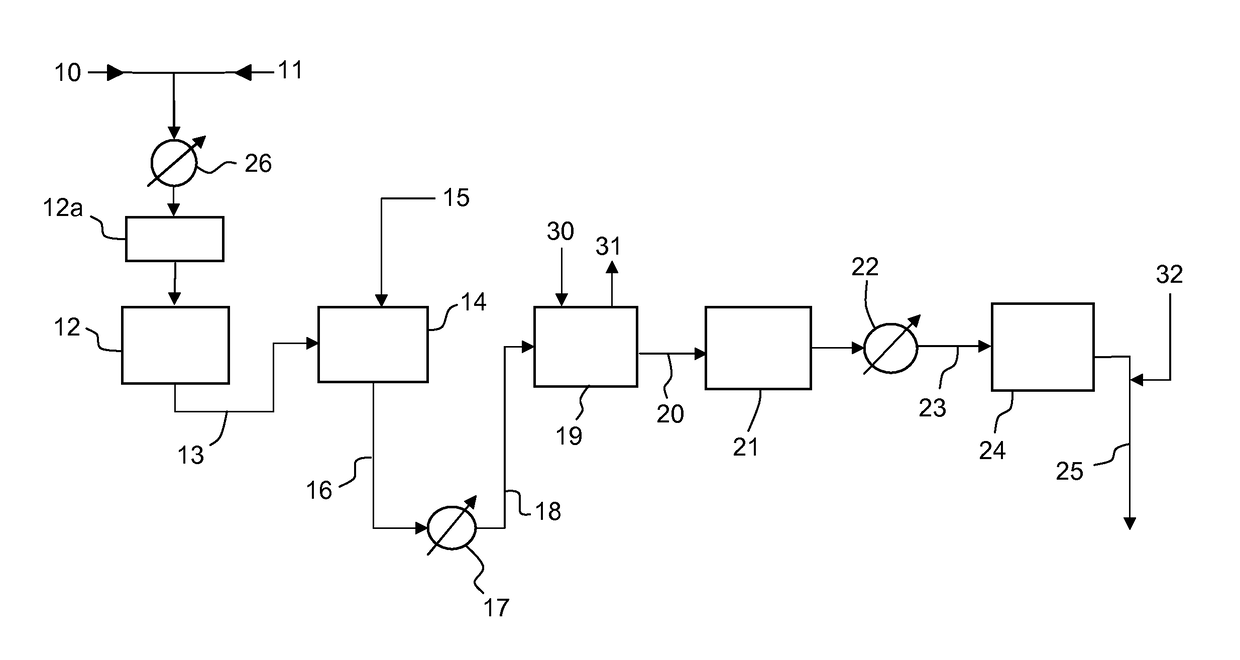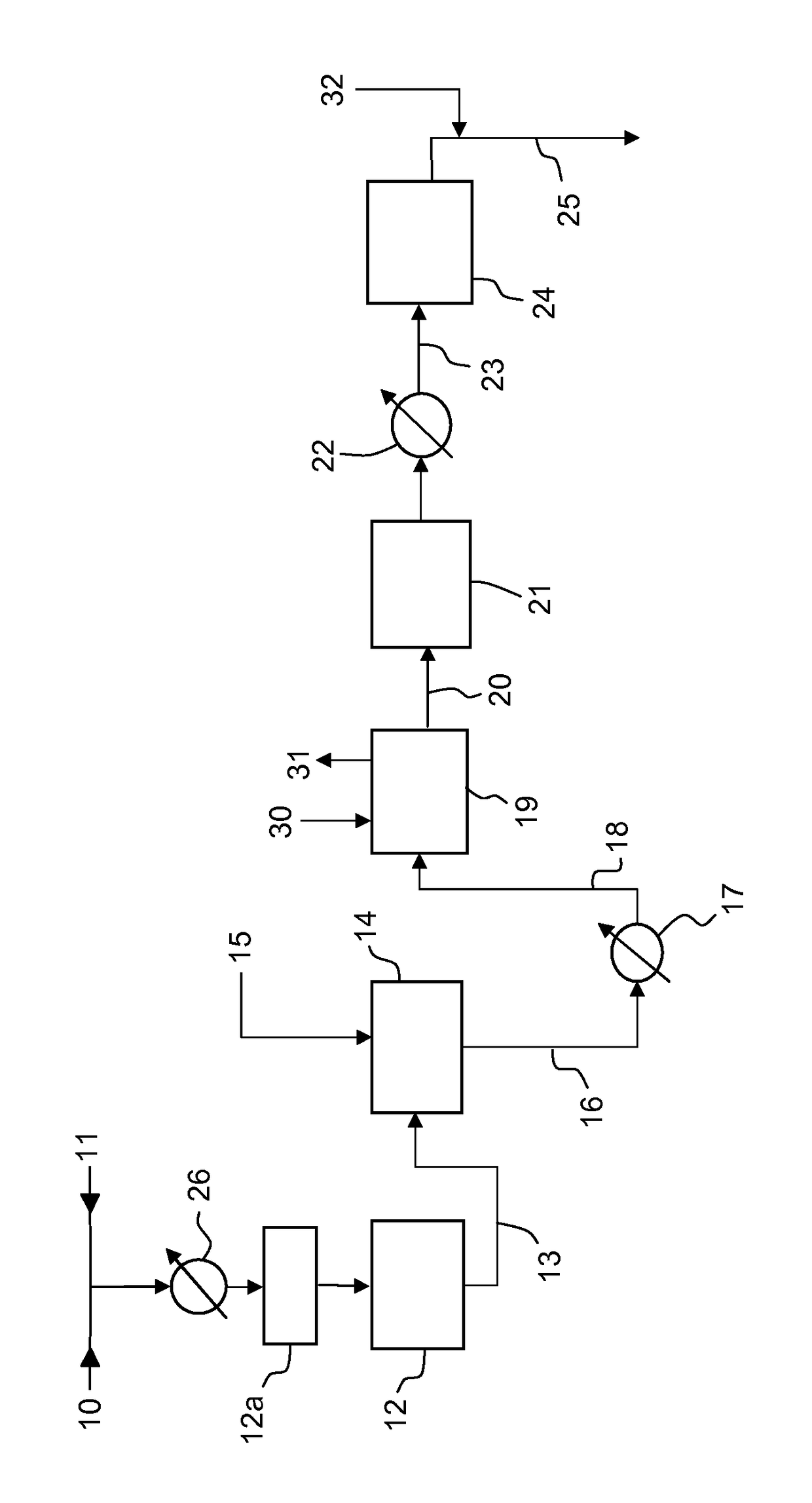Process for producing ammonia synthesis gas
a technology of ammonia synthesis and gas, which is applied in the field of hydrocarbon synthesis gas reprocessing, can solve the problems of large and more expensive equipment, negative impact on the efficiency of reprocessing itself, and large volumetric flow rate, so as to reduce the overall volumetric flow rate of syngas production, reduce the flow rate of substantially inert steam, and increase the flow rate of useful gas
- Summary
- Abstract
- Description
- Claims
- Application Information
AI Technical Summary
Benefits of technology
Problems solved by technology
Method used
Image
Examples
examples
[0050]A conventional ammonia plant rated at 1700 MTD (metric tons per day) of ammonia is revamped according to the following embodiments of the invention:[0051]A) reduction of SC ratio in the primary reformer to about 1.5 and installation of a pre-refomer such as 12a in FIG. 1;[0052]B) same as A with further step of providing excess air to the secondary reformer;[0053]C) same as A with further step of providing enriched air to the secondary reformer;[0054]D) same as A with further step of providing pure (>95%) oxygen to the secondary reformer.
[0055]The production rate can be increased to 2150 MTD (+26%) in case A; 2200 MTD (+29%) in case B; 2500 MTD (+47%) in case C and 2700 MTD (+59%) in case D. The specific energy consumption (Gcal per MTD), including energy consumed for air separation and production of oxygen for air enrichment (case C) or pure oxygen feed (case D), is reduced by about 0.1 Gcal / MTD in case A; about 0.2 Gcal / MTD in case B and about 0.5 Gcal / MTD in cases C and D.
PUM
| Property | Measurement | Unit |
|---|---|---|
| temperature | aaaaa | aaaaa |
| temperature | aaaaa | aaaaa |
| temperature | aaaaa | aaaaa |
Abstract
Description
Claims
Application Information
 Login to View More
Login to View More - R&D
- Intellectual Property
- Life Sciences
- Materials
- Tech Scout
- Unparalleled Data Quality
- Higher Quality Content
- 60% Fewer Hallucinations
Browse by: Latest US Patents, China's latest patents, Technical Efficacy Thesaurus, Application Domain, Technology Topic, Popular Technical Reports.
© 2025 PatSnap. All rights reserved.Legal|Privacy policy|Modern Slavery Act Transparency Statement|Sitemap|About US| Contact US: help@patsnap.com


